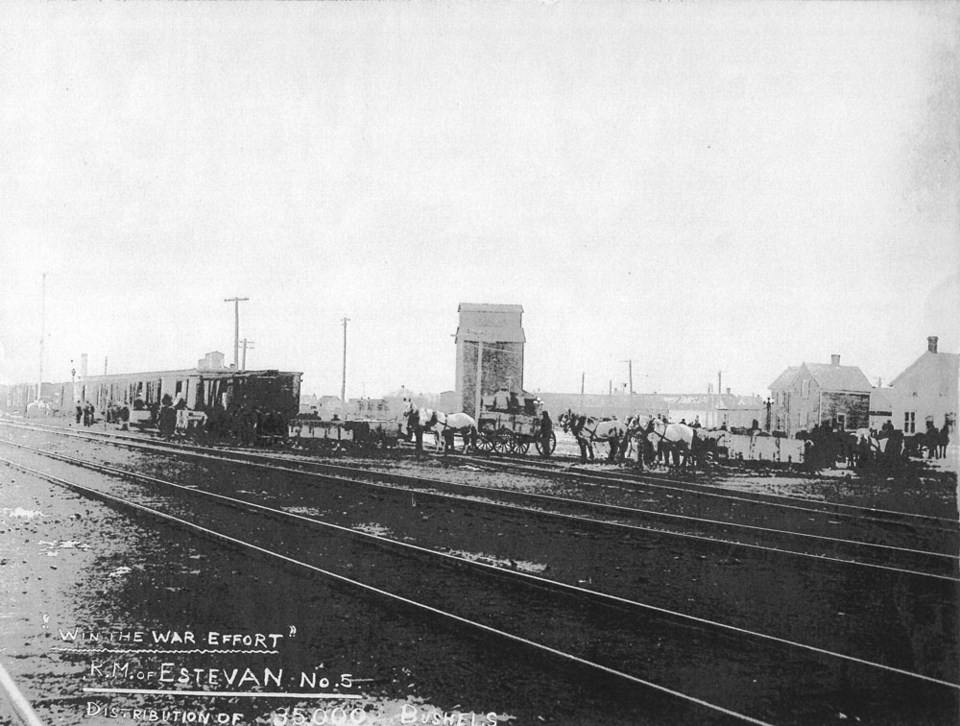Editor’s note:
About 20 pages of an extensive journal that was kept by Alameda-area farmer Forrest Widenmaier found their way to the Agri-News office recently courtesy of his granddaughter Virginia Dietze, who uncovered the journal among her grandmother Susanne’s, keepsakes.
The journal provides a clear written depiction of what life was like on the south Saskatchewan prairies in the late 1920s and early 1930s. It was a hardscrabble existence, but not without its rewards.
Since October is Agriculture Month and with the harvest season rolling to a conclusion, we have decided to take a few notes from Widenmaier’s journal, most of them verbatim, to reprint on our pages since we feel local readers, especially those in rural southeast Saskatchewan, will appreciate the honest, detailed accounts and thoughts of an early prairie producer, just trying to make it work.
We are focusing on his autumn and winter journal entries in this edition and will deliver some of his thoughts and observations on spring and summer, in an early 2017 edition of Agri News.
We, therefore, begin at the end of the journal pages that were delivered to us:
Fall and Winter – As seen by Forrest Widenmaier in the early 1930s
.
Well, threshing is over. The machines are taken home to be put in sheds and the bundle haulers are slowly going all directions to their homes with their bundle of quilts and coats and maybe a straw hat laying on their backs.
The teamster is deep in thought and the team of horses in no great hurry.
Harvest time, in general, I always think of being the gayest and saddest time of the year. The birds are flying back to their home in the south and in the cold or cool fall mornings the meadowlarks do a lot of singing. It’s a sort of good bye song.
We now have autumn or Indian Summer and October frost at nights, leaves of trees turn colours. The days are quiet and a blue haze hangs on the horizon and a smell of smoke is in the air. The days are very warm and cobwebs float around and a certain little brown bug, by the hundreds, fly around.
The splendor of Indian Summer days is wonderful. The farmers are fall ploughing, hauling grain and coal home and cutting wood for winter. It is nice in the trees then. The canary bird is singing and the wind gently blowing in the tree tops while leaves flutter down and the sound of the axe echoes among the trees.
At the end of October, winter usually starts. We have our first fall of usually wet snow.
Farmers gather up their implements, get the cattle home from distant pastures and fields and soon tie them up in the barn.
Then begins a round of chores, like hauling water for some, hauling feed, cleaning out barns, hauling grain to town (not on the dry years), looking after the stock, cleaning seed, working in the workshop then skiing, sleigh rides and tobogganing.
Fires in the stove need plenty of attention and they keep us up late at night in cold weather.
Rabbits and the odd weasel are white, and the only music is the hooting of owls and the howl of wolves, magpies and hawks.
Christmas is the bright and cheerful centre of the winter.
In winter we haul snow, have terrible winds and blizzards and fogs that turn trees and fences into beautiful objects by coating them with an inch or two of frost. The bright sun shining on a bluff of trees coated with frost, looks very pretty. We sometimes have Chinook winds too.
Summary:
No money is really made on the farm when all is summed up and most of us die heavily in debt. Some do make good and have a good amount of money, but these are very lucky, or had a good start, are very clever and lucky managers or plain dishonest.
But this is not the fault of the farm. It is the fault of poor inefficient laws and bloodsucking leaches who do not work. They are too lazy except to get at a lot of living by downright dishonest means, who, with their filthy hands, control finances, markets and factories. When we get laws that will take the money and power away from them and put them in a cooler for keeps, and let honesty and justice rule … farming will pay the way, as it should.
Any farmer who gets disgusted with hard work and no reward (I don’t blame them either) and goes elsewhere, may do better financially, but they don’t feel satisfied. They miss, very much, the life of a farmer on the prairie with its freedom, wide open spaces, birds and plants, its lonely moaning winds that sweep over plains. No foreman is stepping on your toes all the time. You are your own boss. In other words, the prairie gets a hold on you that you cannot shake.



